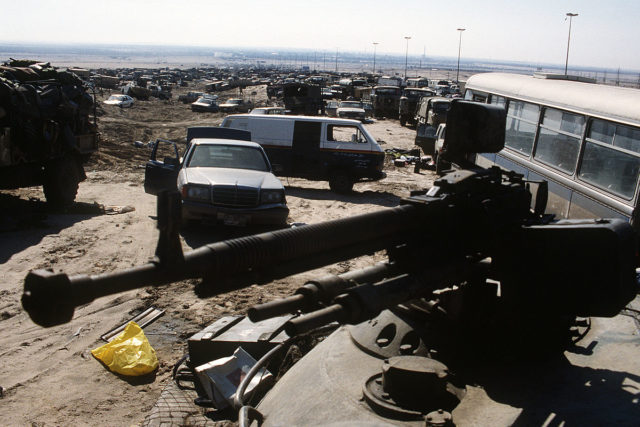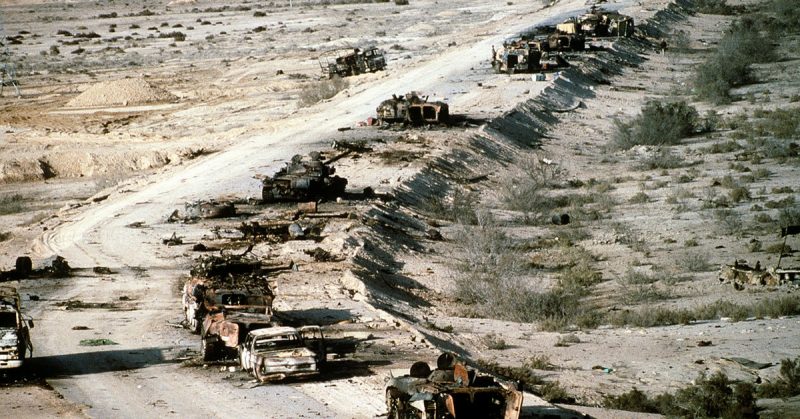The Kuwait – Iraq highways, including highway 80 and highway 8 are the direct road routes connecting these two Middle Eastern countries are huge highways, with route 80 being six lanes across. During the early 1990s, they were the Iraqi Army’s route into Kuwait when they attempted to invade that country.
In response to Allied bombing to drive the Iraqi troops back into Iraq, thousands of Iraqi Army personnel, plus equipment, vehicles, looted valuables and goods, poured back along Highway 80 into Iraq.
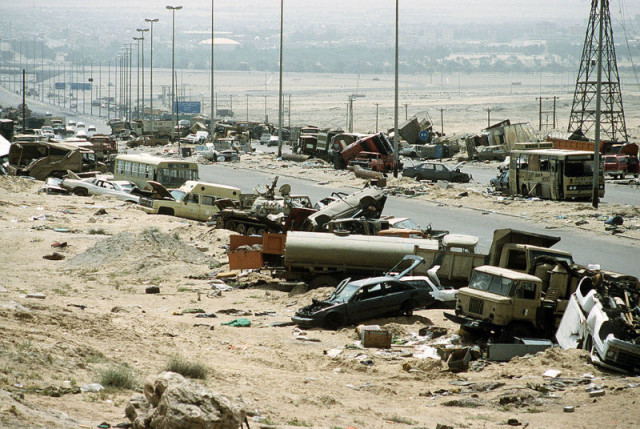
Iraq declared that it would retreat from Kuwait, but it did not agree to the UN resolutions put in place.
Undercover intelligence reported that the Iraqis’ retreat was underway but they were not sure about which route they were taking. It was the US military’s most modern technology, the E-8 Joint Surveillance and Targeting Radar System (J-STARS), that could track moving targets on the ground as well as detect unusual activity. It found a large convoy heading north towards the Iraq/Kuwait border.
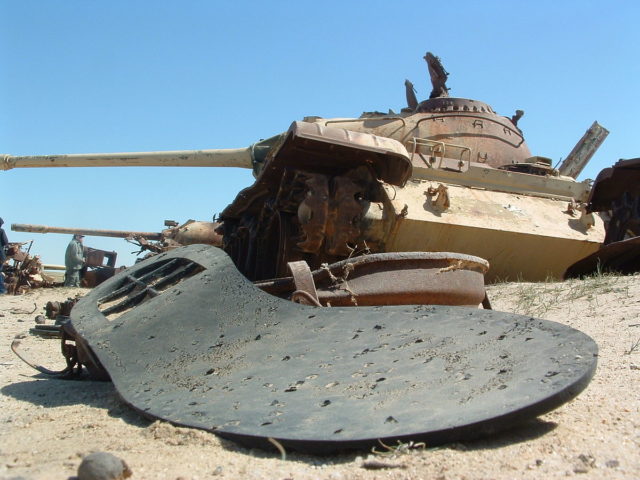
The convoy was three miles long, and the US engaged all of its available aerial attack units to target it. However, bad weather and low visibility hindered the attack.
First to reach the convoy were USMC A-6E Intruder jets with a payload of Mark 20 Rockeye cluster bombs. They targeted the front and rear ends of the convoy to prevent it moving back or forwards, holding it in place for more attacks. The convoy was cut off.
Subsequently, the entire convoy was attacked by coalition aerial forces for around 10 hours. Any vehicle that diverted off of the highway was tracked, hunted and destroyed.
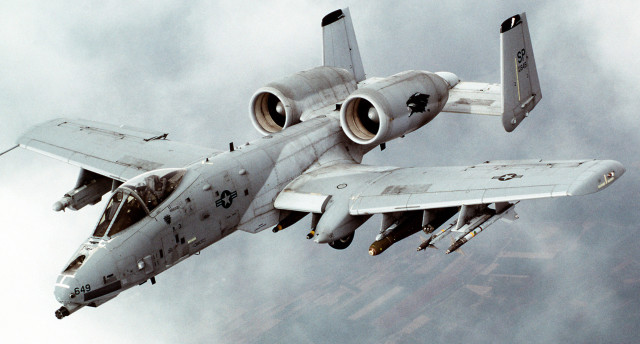
An A-10 Warthog aircraft pilot who took part in the attacks said that it was like a firework show with explosions all over the place.
Highway 8 was also being used by the Iraqi Republican Guard, which was trying to escape Kuwait along that route. US AH-64 Apache helicopters targeted them, killing many and destroying hundreds of military vehicles including tanks and personnel carriers.
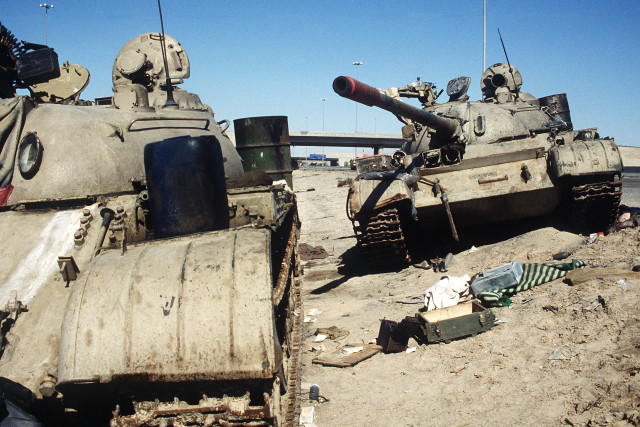
Both routes were completely decimated with hundreds, perhaps thousands of Iraqi soldiers killed.
Coalition leaders justified the attack saying that they had to take out the Iraqi Army’s equipment and vehicles to prevent the possibility of a future attack. Others claim it was an unjustified attack and should never have gone ahead.
